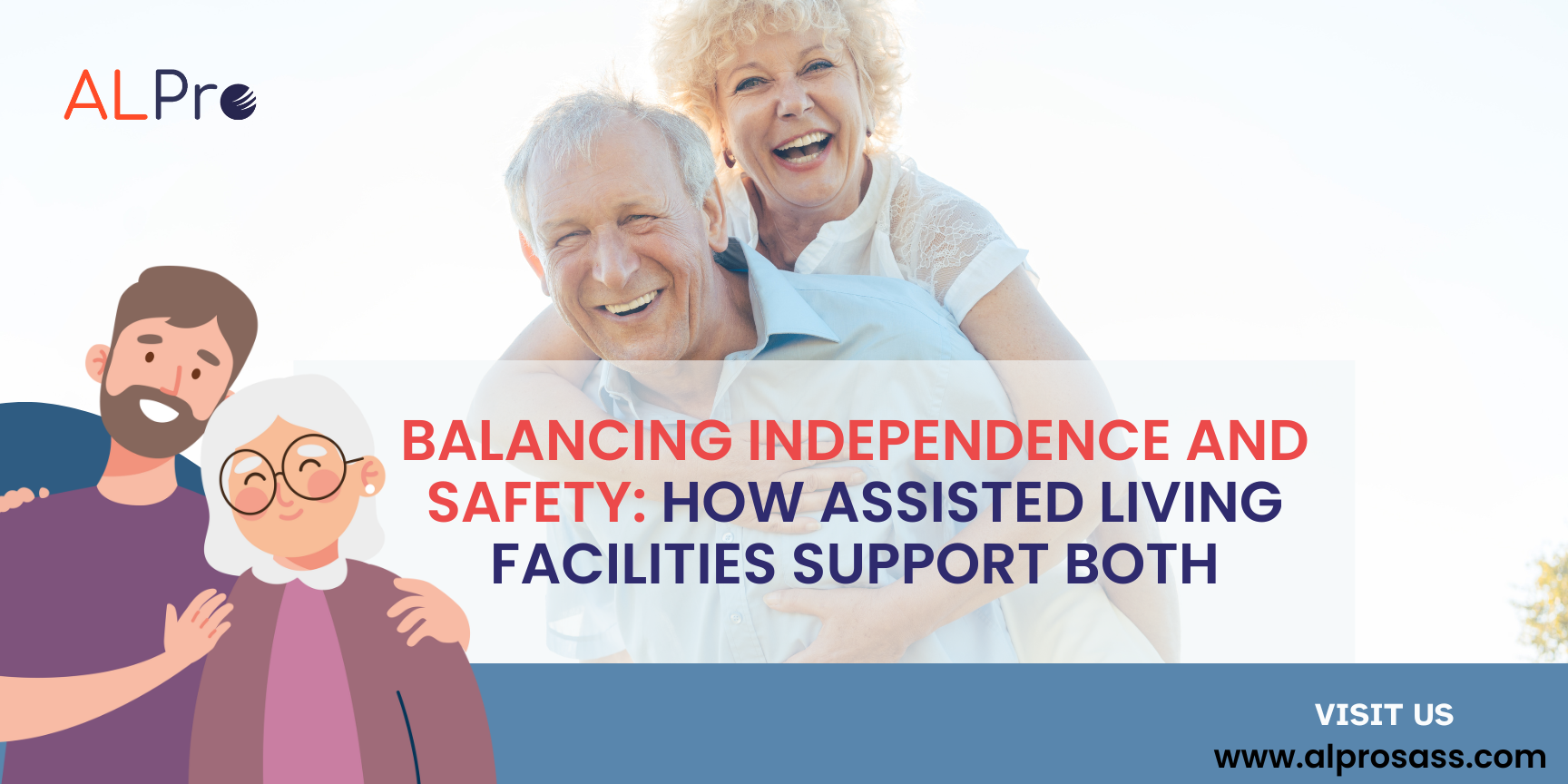Balancing Independence and Safety - How Assisted Living Facilities Support Both

Assisted living facilities have come a long way from traditional care models. Today, they aim to provide care and empower residents by promoting a life of dignity, autonomy, and engagement. The balancing act between independence and safety is central to this mission, allowing seniors to lead fulfilling lives while having the necessary support systems. Here's how modern assisted living facilities embrace technology, personalization, and innovative care practices to achieve this crucial balance.
1. Empowering Residents with Smart Home TechnologySmart home technology has been transformative for assisted living, making it easier for residents to navigate their daily lives independently while providing essential safety measures. These innovations, from automated lighting to voice-activated systems, create an environment where residents can manage routines independently and stay connected.
Bright Lighting: Many facilities now have sensor-activated lights that turn on as residents move through their rooms or hallways. This reduces the risk of falls, especially at night, while allowing residents to move around safely.
Voice-Activated Devices: Devices like Amazon Echo or Google Home enable residents to control appliances, make phone calls, or even ask for assistance hands-free. This boosts residents' independence by allowing them to manage various aspects of daily life at their own pace.
Emergency Alert Systems: Advanced alert systems are discreetly placed in rooms, allowing residents to call for help instantly. Some wearable devices enable residents to stay active and independent while knowing assistance is just a button away.
Each resident in an assisted living facility has unique needs and preferences. Recognizing this, facilities increasingly focus on individualized care plans that balance the desire for independence with necessary safety measures. Personalized care considers medical needs, physical abilities, and personal routines, creating a sense of control and ownership over residents' day-to-day activities.
Health Monitoring and Customized Support: Through health assessments, facilities create a support structure that aligns with each resident's physical and mental needs. For instance, while some residents may need medication assistance, others only require occasional wellness check-ins. This flexibility respects each resident's independence.
Scheduled vs. On-Demand Support: Residents can choose between adhering to activities planned and supported or opting for on-demand assistance. This model allows residents to dictate their routines while ensuring caregivers are available.
Social interactions are essential for mental and emotional well-being, especially as seniors transition into assisted living. Facilities create safe, welcoming spaces where residents can interact, attend group activities, and participate in hobbies. These spaces promote independence and a sense of community while maintaining staff supervision for safety.
Organized Activities: From group exercise classes to game nights and art therapy, a range of structured activities lets residents socialize while maintaining safety measures. Staff presence during these activities ensures that help is available without being intrusive.
Outdoor Spaces and Freedom of Movement: Many facilities feature secure gardens, patios, and walking trails where residents can enjoy the outdoors without supervision. These spaces offer freedom and independence, allowing residents to maintain an active lifestyle in a secure setting.
Mental wellness is as important as physical safety in assisted living. Facilities support cognitive health by offering tailored wellness programs, like memory care, therapy sessions, and mental stimulation activities. These services help residents to stay engaged and mentally active, supporting their independence in a controlled, supportive environment.
Memory Care for Residents with Dementia: Specialized memory care programs offer a safe space where residents with dementia can interact, learn, and reminisce. These programs are designed to boost cognitive function and emotional well-being while minimizing risks associated with memory impairment.
Technology-Assisted Cognitive Training: Some facilities offer convenient access to brain-training apps and cognitive exercises. This promotes a sense of autonomy, letting residents choose activities that are meaningful to them.
While residents may not notice all the safety features, modern facilities integrate various protective measures to ensure peace of mind for residents and their families. Many of these features operate behind the scenes, allowing residents to enjoy independence without constant reminders of safety protocols.
Monitoring Systems: Discreet cameras in communal areas allow staff to monitor resident activity unobtrusively, providing a layer of safety without intruding on personal space. This monitoring also assists in identifying potential risks before they become issues.
Controlled Access: Modern assisted living facilities use secure entry and exit points to prevent unauthorized access. This keeps residents safe while allowing them to navigate the facility freely, knowing their environment is secure.
Regular Safety Audits: Facilities conduct regular safety assessments to identify potential hazards and ensure equipment, technology, and facilities are up to date. These assessments keep the environment safe from fire alarms to emergency exits without disrupting the residents' daily lives.
Today's assisted living facilities are redefining senior care by balancing fostering independence and providing essential safety. Through innovative technology, personalized care plans, social engagement, and invisible safety features, residents can experience a life of dignity and freedom while feeling secure. This approach enhances residents' quality of life and gives families peace of mind, knowing their loved ones are empowered and protected.
As assisted living continues to evolve, the focus on independence within a safe framework will only deepen, making these communities vibrant, supportive spaces for seniors to thrive.
